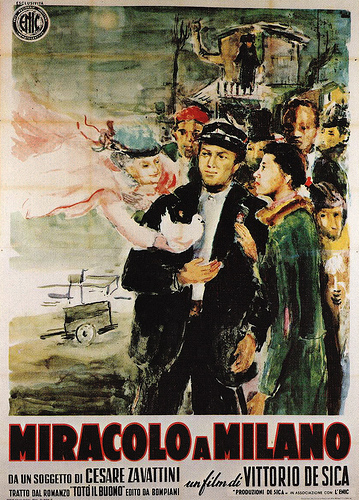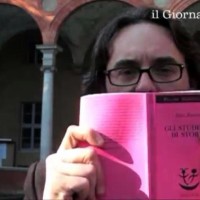
Sofia Pomoni
Smoky, contradictory and evasive. Immerse yourself in a Milan between the real and the dream is not an opportunity that happens every day. In “Miracle in Milan” (1951) by Vittorio De Sica all this is possible. The city is the set for the story of Totò (Francesco Golisano) who joins a community of homeless people from Milan’s outskirts. But when they are evicted from a wealthy land owner, Totò aims to lead the inhabitants of the slums to the “war” for defending their barracks.
“Miracle in Milan” is one of those movies that have made the cinema history, influencing the mainstream culture of those years: the neo-realism. De Sica’s film, adapted from “Totò the good” by Cesare Zavattini, was not immediately accepted positively by the critics for the choice to narrate events on the bourgeois world’s edges. To fully enjoy the greatness of this movie you must wait for the final scene, when the line between reality and dream disappears and gives way to a “miraculous” Milan. It has become legend and has even inspired Spielberg’s ET. So, after “Miracle in Milan” you will never look at the Milan Cathedral with the same eyes.
Mi basta un po’ di terra per vivere e morir
Chiediamo un paio di scarpe ed anche un po’ di pan
A queste condizioni crederemo nel doman
A queste condizioni crederemo nel doman
Mi basta una capanna per vivere e dormir
Ci basta un po’ di terra per vivere e morir
Chiediamo un paio di scarpe ed anche un po’ di pan
A queste condizioni crederemo nel doman
A queste condizioni crederemo nel doman





